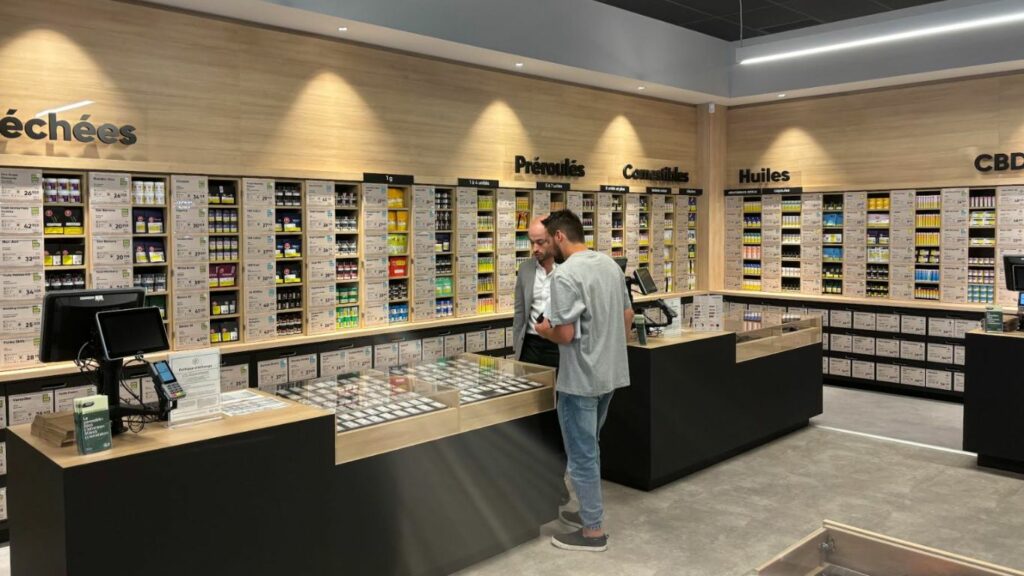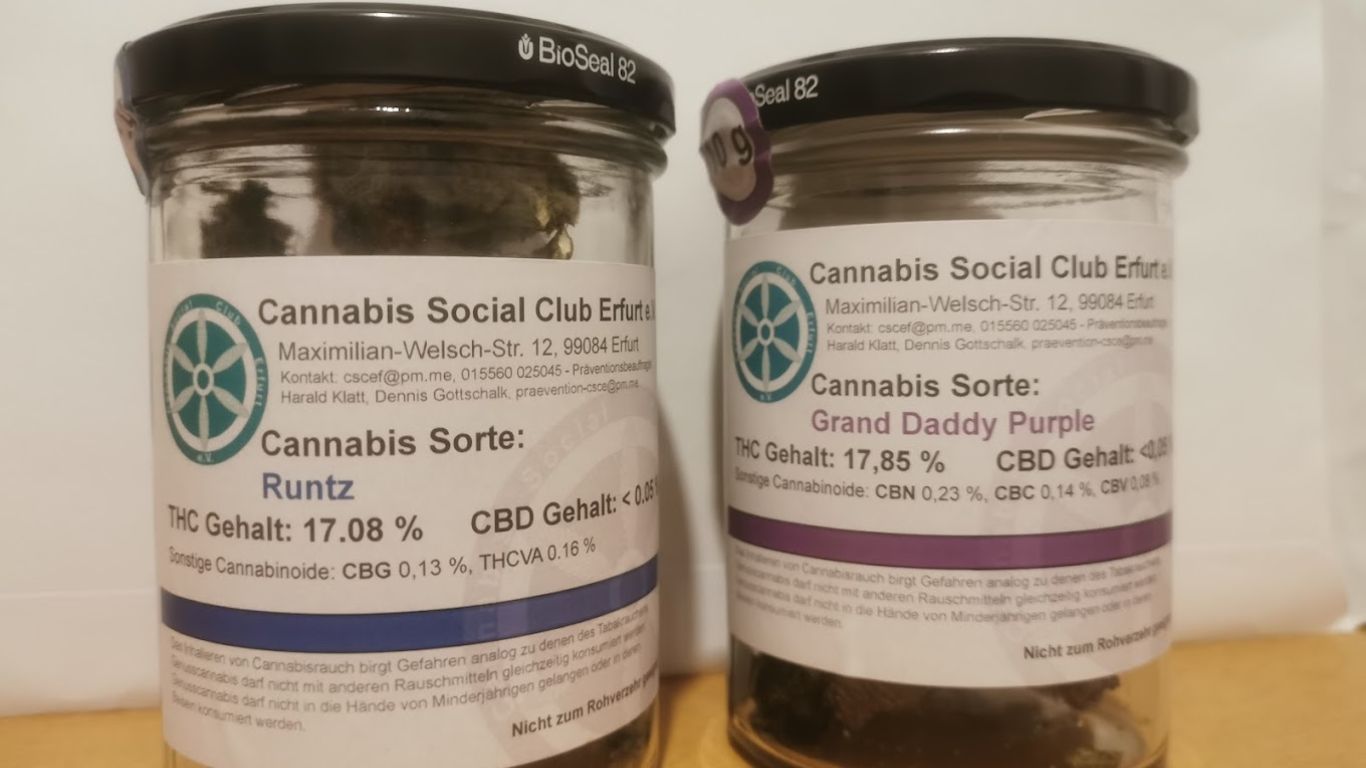
If the Canadian cannabis industry were a painting, it would be more Jackson Pollock than Rembrandt. While the country made history by being the second (after Uruguay) to legalize, it also became a canary in a coal mine, so to speak, showing others in waiting various examples of success and failure.
There is likely no better display of this legalization kaleidoscope than the mishmash of retail frameworks that exist across the country. Each province has its unique take on the supply chain and the stores themselves, and all of it is subjectively working or not, depending on who you talk to.
StratCann wanted to examine two very different yet profitable business models, Quebec and Ontario, and ask some experts what works for these strategies, what doesn’t, and where they may be 5-10 years down the road.
“Quebec came in with probably the biggest apprehension of any province, I think we are still seeing that today,” said Nathan Mison, President of Diplomat Consulting.
Mison went on to add that from his perspective, the SQDC did the “bare minimum” that was required at the beginning of legalization. He feels this has led to a limited number of retailers and the province’s population being underserved.
“[As for] Ontario, it is a very unique environment with the AGCO having regulatory involvement and then the OCS being the primary moneymaker and commercial driver of wholesale and distribution,” he said.
Mison added that political change at that time likely altered Ontario’s course. “The Wynne government’s aspiration was to have it like the LCBO, where you would have vertical integration. The [incumbant] Ford government decided that the private retail model was more a model consistent with their economic understanding.”
“Two jurisdictions like Ontario and Quebec that hold the vast majority of the Canadian population are probably more important to the success and viability of that opportunity.”
Nathan Mison, Diplomat Consuting
Then and now
Some of the people who notice the most wins and losses in each of these two frameworks are the producers and suppliers of cannabis products in Canada. They have the task of adhering to an endless list of nuances that exist in this country-wide variety pack of rules and regulations.
“Quebec has the advantage of an efficient one-store mentality where stores are not competing with each other as they all sit under the same umbrella, and distribution is relatively consistent of your products amongst them,” said Margaret Brodie, CEO of Rubicon Organics. “Ontario’s set up is a free market retail approach where locations, products and store set ups are individualized to ownership, meaning variety for the shopper. As a result, the Ontario consumer experience is different in almost every store visit where Quebec is homogeneous (other than its nursery program).”
“Quebec has the advantage of an efficient one-store mentality where stores are not competing with each other as they all sit under the same umbrella, and distribution is relatively consistent of your products amongst them.”
Margaret Brodie, Rubicon Organics
Brodie listed some of the other important differences as well, including:
- Quebec does not have vapes, topicals, or traditional edible formats.
- Quebec lists its menu by THC across most categories.
- Quebec does not allow in-store education or LP marketing materials, which makes it difficult to educate budtenders on brands and products—although they have recently announced that educational videos on brands will be allowed and provided to store staff for training purposes.
- Quebec does not allow products over +30% THC, including concentrates, which, in Brodie’s view, only supports the black market.
Mison also agrees that there are challenges in the framework for the Quebec model that hinder efforts to eliminate the black market. “I think Quebec has a significant problem, especially with, in my opinion, their short-sightedness on vape and edible products that have allowed the illicit market to flourish.”
Right and wrong
Speaking on the same topic of what’s going right and wrong in these markets, Mison added it depends on whom you ask.
“In Quebec, I would say they are doing it right for the government, which is creating revenues that go into government coffers,” he said. “I think their ‘buy Quebec’ model that is in their regulations has made it so that Quebec licensed producers are some of the most robust and successful in the country.”
He went on to say that Ontario “punched themselves in the face to get to where they are today,” referring to the “ridiculous amount of lotteries they did.” Despite that, he feels the Ontario model is a success. “It probably has allowed for the proliferation [of legal stores] and displacement of the illicit market.”
As for what needs to be changed, Mison feels that a piece of low-hanging fruit is taking window coverings down in retail stores in Ontario and Quebec, just as other provinces have done. He also has thoughts on other modifications.
“Ontario’s set up is a free market retail approach where locations, products and store set ups are individualized to ownership, meaning variety for the shopper. As a result, the Ontario consumer experience is different in almost every store visit where Quebec is homogeneous (other than its nursery program).”
Margaret Brodie, Rubicon Organics
“I believe in a hybrid model. There should be private wholesale and distribution as well as government wholesale and distribution,” he said. “I [also] think the end of prohibited relationships is going to be a big change. Ontario will go first and Quebec will go kicking and screaming. No other retail environment in Canada [prohibits] a producer and a retailer to have direct relationships. Treat cannabis the same as alcohol.”
Mison added that he would also like to see changes in how and where Canadians and tourists can consume, not just in Quebec and Ontario but everywhere.
“The proliferation and opportunity we are seeing in the United States with cannabis hotels and consumption sites, therapeutic use in spas, Canada has an opportunity to see that. Two jurisdictions like Ontario and Quebec that hold the vast majority of the Canadian population are probably more important to the success and viability of that opportunity.”
Brodie also shared some diverse thoughts on what she would like to see moving forward so producers can have a healthier landscape in which to do business.
“I’d like to see enforcement against the black market in both provinces and nationwide, in particular, shutting down online storefronts delivering in major centers within 45 minutes,” she said. She added that Ontario came out in its recent budget with $30 million for enforcement efforts, and she would like to see the federal government and other provinces follow suit.
“If there are no changes to enforcement then reduce our fees and taxes so that legal businesses can compete on a level playing field.”
Brodie would like to see some additional changes to both models. For Quebec, an increase in the number of stores, more product education, and making vape products available are on her wish list.
“[For Ontario] I’d love to see more data from the OCS for LPs to know where our product is sold so we can support those stores with education as well as more frequent product calls,” she said.
“From a public safety perspective, I’d like to see the elimination of store window coverings which reduces risk to retail employees who work alone or at night in stores, and reduces stigma related to cannabis products.”
“Today, we are much more driven by enhancing customers’ experience. We have already revamped and renovated existing stores to make them more convenient.”
Chu Anh Pham, La Société québécoise du cannabis
Where will we be in 5 or 10 years?
Although nobody has a (working) crystal ball, there’s nothing wrong with looking down the road and predicting where both markets will be in the near and more distant future.
“In Quebec, I expect to see over 400 SQDC stores that offer more education and explanation compared to where they are now,” Brodie said. “In Ontario, I expect to see the strength of chains and brands grow through consolidation with smaller stores needing to focus on differentiated experiences.”
Brodie added that she believes the stigma towards cannabis will be in our “rearview mirror”, and its acceptance will be more prominent with the possibility of lounges and consumption at outdoor areas such as fairs and festivals. Further, she believes that non-intoxicating cannabinoid products will be made available outside licensed stores, particularly CBD in the natural health product sector.
Mison believes that the future of these two markets depends on the different political landscapes moving forward.
“It depends on the elections that are going to occur in the next 18 to 24 months to see significant changes in both those jurisdictions,” he said. “Canadians’ opinions on cannabis are actually further along than our political bureaucratic and regulatory class, and it’s [the latters’] responsibility to catch up to where the citizenry is.”

Straight from the source
StratCann reached out to both the SQDC and OCS for comment on how far they’ve come and where they expect to go moving forward.
“SQDC has changed a lot since its opening. At the very beginning of cannabis legalization, we had to act rapidly to open stores. Everything had to be built: find locations, leases, staff, suppliers,” said SQDC Spokesperson Chu Anh Pham.
“Today, we are much more driven by enhancing customers’ experience. We have already revamped and renovated existing stores to make them more convenient, we have changed the product display in certain stores this year (which up until now presented by categories Indica/Sativa/Hybrid), by adding several new product categories like beverages and pre-rolls, we now sell accessories such as pipes and grinders. Delivery service and on-line orders are also available.”
[Editor’s Note: We have update the above quote to improve clarity].
Pham added that they have grown to 100 stores and 1,200 employees.
“Since our mission aims to progressively eliminate the illegal market, while still protecting public health, we are constantly trying to put forward a product offer and quality that suits customers’ expectations and fits into our legal framework,” said Pham. “So, we will keep opening new stores, but at a slower pace.”
She said they “plan to open about 20 stores during the next 3 years, including 9 this fiscal year,” with new concepts being tested in each new location.
Pham addressed the SQDC’s perspective on the ever-evolving product market and how it affects their decisions moving forward.
“New products enter constantly whether on the illegal market, other legal provincial markets in Canada, or even on the foreign market and Quebecer consumers are exposed to them. We follow every trend carefully to be ready to adapt if the legal framework must change,” she said. “Vaping products, legal age for consumption, THC degree, and attractive ready-to-eat, are subjects debated in society.”
“The Ontario Cannabis Store is constantly adapting to a shifting cannabis retail landscape and rapidly changing market demands.”
Solomon Israel, Ontario Cannabis Store
As for the OCS, StratCann reached Solomon Israel, Senior Communications Advisor, who assisted with these comments.
“The Ontario Cannabis Store is constantly adapting to a shifting cannabis retail landscape and rapidly changing market demands,” he said. “We have worked hard to help authorized retailers and licensed producers succeed as Ontario’s cannabis retail framework has evolved. The OCS has grown quickly within Ontario’s legal cannabis industry, scaling up our wholesale operations by moving to a larger, highly automated cannabis distribution centre in 2020.”
He added that they have recently made improvements to their product call and product assortment processes, announced enhancements to their Flow-Through program, and upgraded data access that assists LPs with product forecasting.
“Future OCS initiatives will continue to focus on improving the wholesale experience for both licensed producers and authorized retailers, informed by market data and feedback from our partners.”
~Jonathan Hiltz. Jon is a long-time journalist, published author, and executive in the cannabis industry, which he joined in 2016. jonhiltz.com











